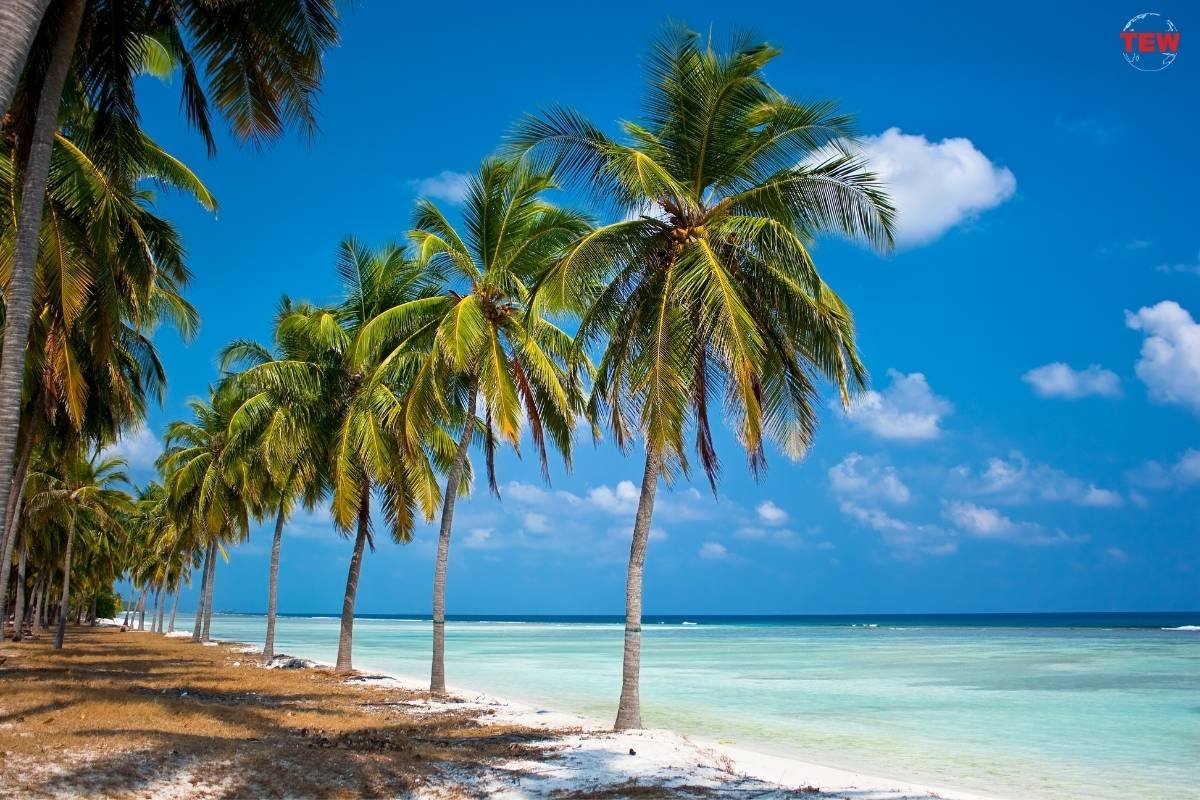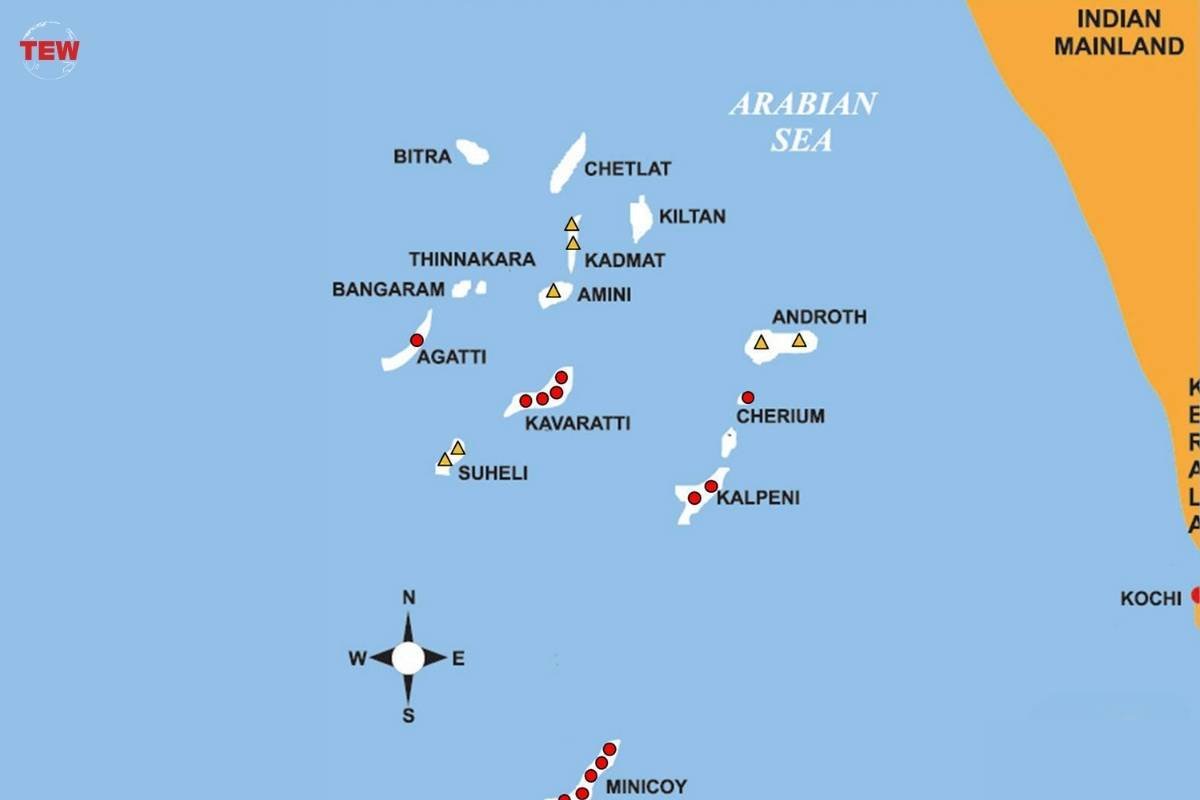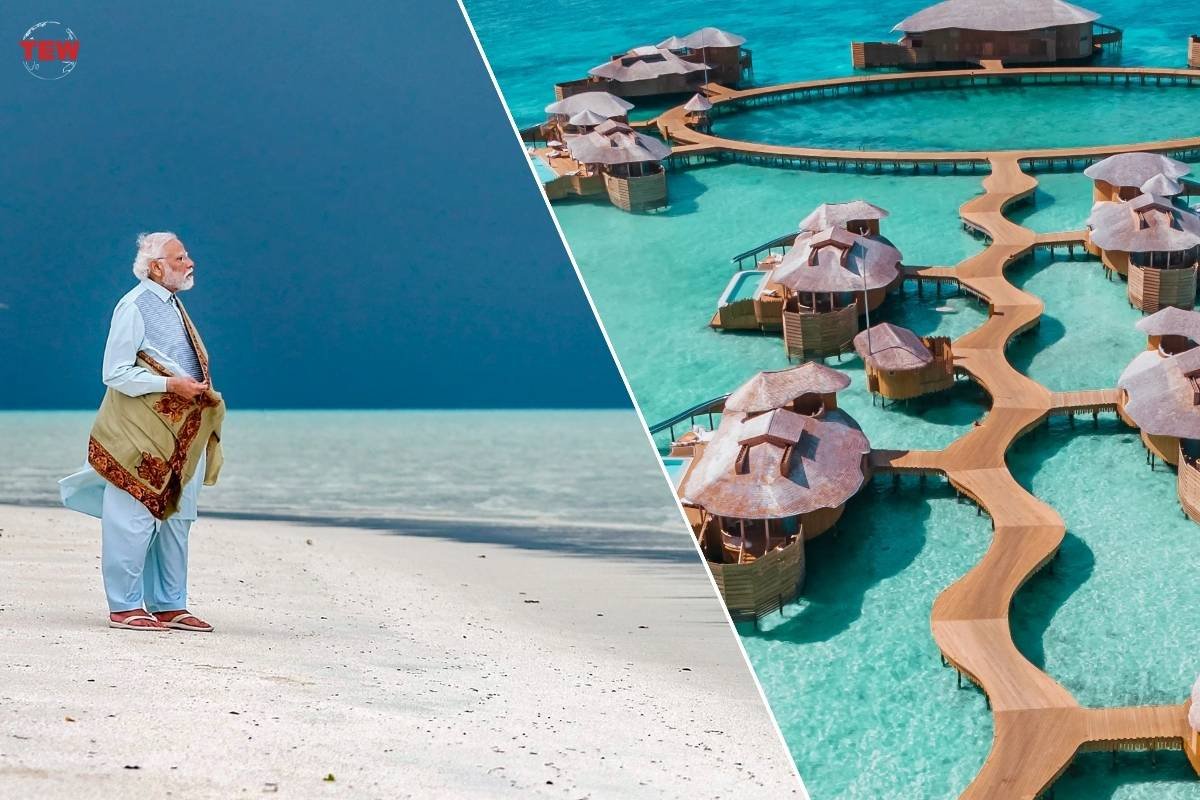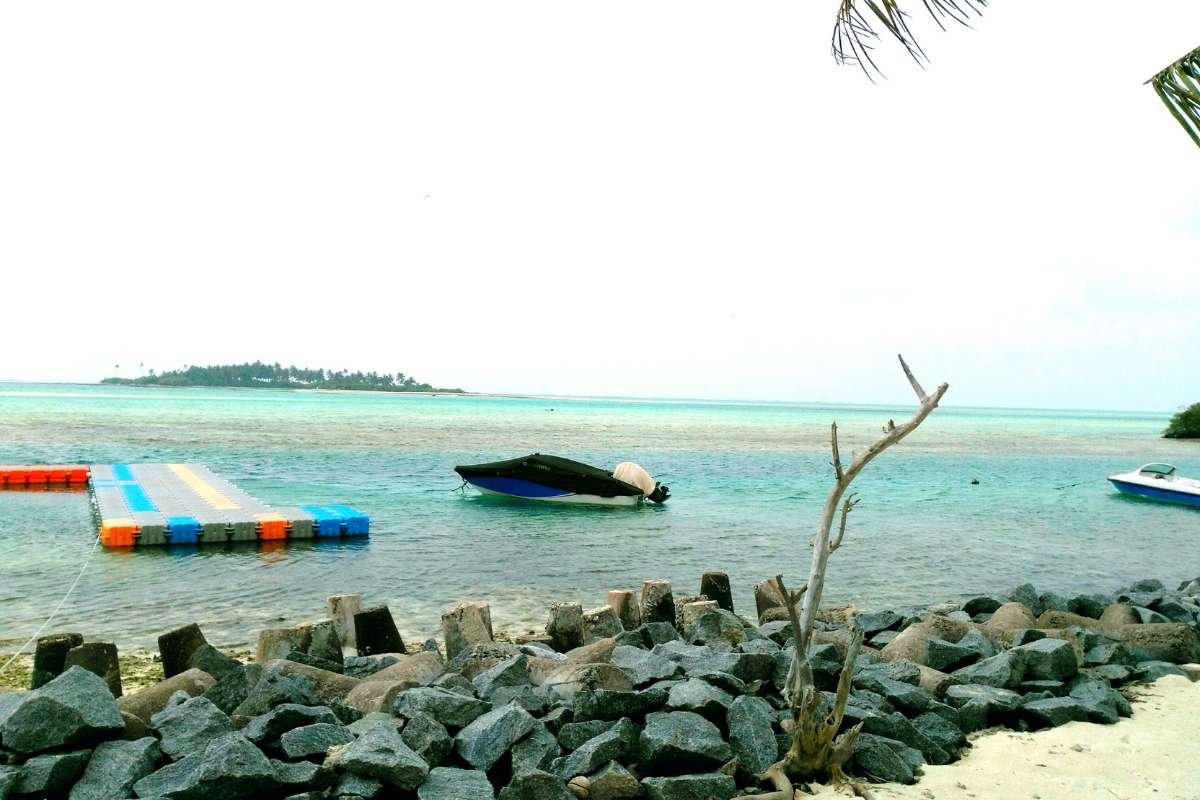Lakshadweep is like a real-life Avalon, a mysterious island from the Arthurian legend. Similar to the Avalon’s legendary charm, Lakshadweep islands are known for its beautiful and isolated coral atolls. It also features stunning lagoons that disguise many bio-diverse mysteries beneath their surface. In Lakshadweep, cultural treasures and vibrant marine life create a unique attraction, making it a real-world counterpart to the legendary Avalon. It’s a place where time seems to stand still, and the boundaries between reality and fantasy blur. This article makes that boundary a bit clear and defines everything you need to know about Lakshadweep islands.
History of Lakshadweep
The earliest record of Lakshadweep Islands was when a Greek sailor first mentioned the islands of Lakshadweep in the 1st century CE as a source of tortoise shells.

These points broadly summarize the history of Lakshadweep Islands. However there are many more such tales that define the mystique of this place.
Economy of Lakshadweep Islands

Eco-System at Lakshadweep
1. Land and Climate:
Lakshadweep consists of small islands, without exceeding the width of 1 mile. The Amindivis are the northmost, and Minicoy is the southmost. Inhabited islands are mostly coral atolls, with higher eastern sides suitable for living and lagoons on the west protecting from monsoons. The sandy soils are coral-derived. Temperatures range from about 70 °F to nearly 90 °F throughout the year. Cyclones rarely make landfall on the Arabian Sea islands, but their associated winds and waves can alter the topography.
2. Plant and Animal Life:
Lakshadweep Islands teems with coconut palms and diverse trees, including banyans, casuarinas, pandani (screw pines), breadfruits, tamarinds, and tropical almonds. Betel nuts and betel leaves thrive here. In the surrounding waters, sharks, bonitos, tunas, snappers, and flying fish are prominent, while manta rays, octopuses, crabs, turtles, and various gastropods abound. The islands also host a variety of water birds like herons, teals, and gulls.
3. People and Faith:
People in Lakshadweep, except on Minicoy, trace their roots to migrants from the Malabar Coast in southwest India, arriving before the 7th century CE. These migrants, later converting to Islam, established the predominant religion in Lakshadweep. While Islam is the main faith, remnants of the original Hindu migrants’ religious and social practices persist, as seen in matrilineal kinship and caste-like groups. Malayalam is the primary language, with Mahi spoken on Minicoy and some Hindi speakers. The population is concentrated on Andrott, Kavaratti, Minicoy, and Amini islands.
What, Where, and Why Lakshadweep Islands?

1. What and where is Lakshadweep?
Located 500 km southwest of Kochi, the 4200 sq km lagoon land of Lakshadweep comprises 36 islands, of which only ten are inhabited, covering a total landmass of 32 sqm. Despite its political and historical connection to India, it remains somewhat isolated from mainland developments. The islands faced challenges due to the delayed communication of Gandhi’s assassination, which took 14 days to reach them. Primarily dependent on imports, from tissue paper to vegetables and electricity, everything comes from the Indian mainland, as the islands lack power plants for electricity generation.
2. Why visit Lakshadweep?
Just 10m from the shore, dive into turquoise waters to discover vibrant coral and Nemo (yes, the Clownfish). The islands, surrounded by coconut groves, offer constant sea views as you drive. With a small population of 66,000, it feels like there are more coconut trees than people. Lakshadweep’s regulated tourism preserves its marine and land ecosystems, creating an eco-friendly haven. For an affordable beach getaway with India’s cleanest shores, head to the less-explored Lakshadweep.
3. How to reach Lakshadweep?
Start your Lakshadweep journey in Kochi, Kerala, accessible by cruise or flight. Kochi, a delightful blend of colonial and Malabar architecture, offers a fascinating start. Spend a few days exploring this vibrant city before choosing between a flight or cruise to Lakshadweep Islands based on your preferences. Once on the islands, walking is sufficient, as they are easily navigable. Boats are the primary mode of transport, and while there’s a chopper service, it’s pricier for island hopping.
Best Things to do in Lakshadweep: A Group of 36 Islands

1. Don’t miss the beautiful view during Agatti’s landing
After landing at 30+ airports worldwide, most flights are uneventful. Ladakh stands out with its stunning Himalayan views, but nothing compares to Agatti’s runway, Measuring 7 km on Google Maps. A 120m-wide black runway, seemingly floating amid turquoise waters, bordered by green bushes and white sand. It is one of the most beautiful sights as your first glimpse of this island paradise is from the plane. Capturing the moment is like securing a Lakshadweep travel permit – challenging.
2. Go Scuba Diving and Snorkeling
Dive into the wonders of Lakshadweep Islands through scuba diving and snorkeling. Although smaller than the Red Sea in marine life, it’s perfect for occasional divers. Boats take you to prime diving spots, while just a short walk from your room unveils a psychedelic underwater world for snorkeling. Wear water-resistant shoes to explore sunken shipwrecks with metal plates underneath. The underwater is covered with vibrant corals and fish, disconnecting you from the everyday hustle. Experience the magical transition from chirping birds to the soothing sound of flowing water. The diving instructors there can summon a school of fish with a snap, creating a mesmerizing underwater spectacle.
3. Have a hammock dream.
Lie back and dream in a hammock amid the mesmerizing beauty of Lakshadweep. For non-avid sailors, the irresistible beachscape keeps us outdoors, away from our rooms. The soft sand is inviting, but locals frequent the beach in the evening. For a peaceful nap, savor your heavenly “Me Time,” observing palm leaves sway and the turquoise water transforms into golden hues.
4. Explore Islands and Fishing Adventures.
Fall in love with an island, where the coral world is a short walk away, and good food is always at your fingertips. The true charm, however, lies in scuba diving and boat rides. Engage with local boatmen and learn the art of fishing with sharp hooks. Witness fishermen patiently waiting with widespread nets in shallow lagoons. Despite not spotting turtles while diving, the fishermen had caught one in their nets, releasing it back into the sea. As a seafood enthusiast, relish the delicious catch cooked by boatmen, offering an authentic taste of Lakshadweep. Experience island hopping, engage in fishing, and savor the best Lakshadweep cuisine.
5. Sunset Magic in Lakshadweep Islands
Lakshadweep offers a unique sunset experience. There is no need to scout for the perfect spot, whether on the beach with kids flying kites or on a boat heading back to Kavaratti, facing west unveils a mesmerizing sunset. The sun, seemingly larger, paints the turquoise waters in shades of gray and copper. The beauty of Lakshadweep is that you can savor this magical moment without any prior planning. Just face west and let the enchantment unfold.
Lakshadweep vs Maldives: A Closer Look into the Controversy

The Indian Prime Minister, Narendra Modi’s recent visit to Lakshadweep on January 2, 2024, has triggered a significant shift in travel plans for many Indians, diverting attention from the Maldives. While this move is beneficial for the Indian economy, questions arise about Lakshadweep’s readiness for a sudden surge in tourism.
Obtaining a permit is a prerequisite for visiting Lakshadweep, even for Indian citizens, setting it apart from more accessible destinations like Andamans or Pondicherry. Striking a balance, the local authorities must manage tourist inflow to prevent over-tourism and maintain the island’s unique charm.
With the local community’s pride and love for Lakshadweep Islands, there is confidence that conscious travel practices will be embraced. Tourists must view these places beyond being mere backdrops for Instagram selfies. As we advocate to “Save the earth,” let’s remember that nature has its ways of preserving itself, urging us to travel responsibly and respect the destinations we explore.
Why Choose Lakshadweep over Maldives?
Lakshadweep has a unique charm that might make it a preferred choice over the Maldives. Here’s why:
- Less Crowded: Lakshadweep is quieter and less crowded than the Maldives. Strict entry regulations help maintain the islands’ pristine beauty, offering a more serene and secluded atmosphere.
- Authentic Cultural Experience: Lakshadweep provides a genuine Indian cultural experience. Interact with local communities, learn about traditions, and immerse yourself in an authentic cultural environment.
- Untouched Natural Beauty: Known for its untouched natural beauty, Lakshadweep boasts pristine coral reefs, lagoons, and marine life—ideal for nature lovers and those into underwater activities.
- Biodiversity: Home to diverse marine life, including various fish, coral, and turtles, Lakshadweep is a paradise for snorkeling and diving enthusiasts.
- Government Regulations: Strict government regulations in Lakshadweep preserve ecological balance and promote sustainability, making it an attractive destination for environmentally conscious travelers.
- Less Commercialized: Lakshadweep is less commercialized than the Maldives, offering an off-the-beaten-path experience. Limited tourist infrastructure contributes to a more authentic and unspoiled environment.
- Cost Considerations: Traveling to Lakshadweep can be more cost-effective compared to international destinations like the Maldives, eliminating the need for international flights.
Comparison of Trip Costs: Lakshadweep vs. Maldives
Here is a detailed breakdown of the estimated expenses for a romantic getaway to the enchanting destinations of Lakshadweep and the Maldives. From flight costs to daily expenditures, this comparison aims to assist travelers in making an informed decision based on their preferences and financial plans.
| Expense Category | Maldives (USD) | Lakshadweep (USD) |
| Flight Cost (Round-trip for two) | $361.64 | $241.09 |
| Accommodation Cost | $84.38 to $120.55 | $24.11 to $84.38 |
| Food Expenses per day | $12.05 | $3.62 |
| Sightseeing Places per day | $54.25 | $24.11 |
| Other Expenses | $60.27 | $36.16 |
| Average Daily Expense (per couple) | $210.96 | $88 |






